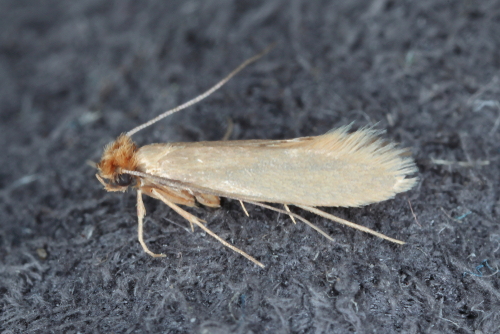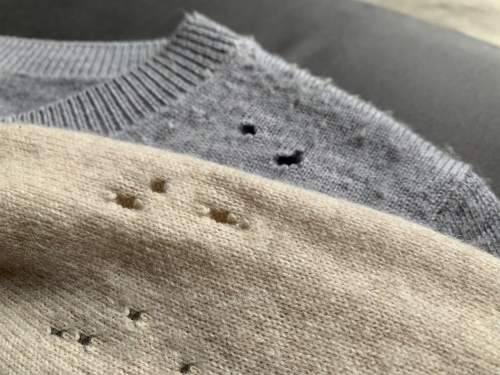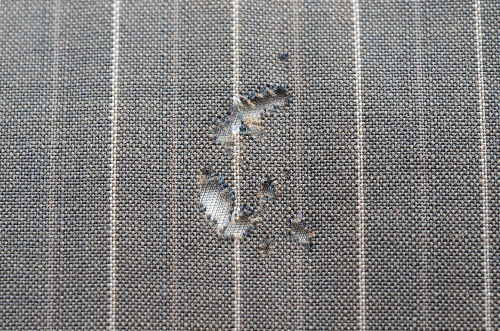Moth Removal Service
Home » Services » Moth Removal
A moth infestation develops very quickly. Not only do they increase in number, but they can also spread into any space. Especially places with cracks, holes, or cervices are perfect places for moths to take refuge. Even if you use some DIY methods, the chances are that you will leave a tiny hole or crack meaning your efforts will go to waste, and you won’t be able to get rid of moths from your house.
If you are trouble with moths at your home, then worry not! NYCleaners offers complete moth removal and prevention services for your home. Our eco-friendly moth extermination treatment is designed to keep these pests away from your house.
Get Professional Moth Extermination Service
Moths can cause damage in fabrics like carpets, clothes, curtains, and upholstery. They eat carpets and other fabric to get their nutrition and to reproduce larvae. Moths can also contaminate your pantry items. Eating contaminated food can cause allergies, illness, digestive problems, or even food poisoning.
There is not one but several types of moths, which is why getting rid of moths can be hard. Different types of moths feed on or contaminate different things. Moth infestation negatively impacts the hygienic condition of your house and makes the food unsafe to consume.
NYCleaners Moth Removal Guide
Moths Attack Your Carpet: The Warning Signs
Alarm bells should go off in your head if you see small, nondescript moths fluttering around your carpets or rugs. The danger to your carpet will not come from these adult moths, but rather from their larvae which live in your floor coverings.
These ravenous larvae feed upon wool and silk carpets particularly, and carpets that have goat hair will be especially delicious to them. These larvae can do incredible amounts of damage if the infestation is heavy; chewing away at the fibers of the carpet and the backing until they are ready to pupate, become adult moths and begin the cycle of destruction again.

You will not necessarily be safe if you have a synthetic carpet, either, pet hair in the carpeting and unintentional organic additions such as pet urine or food spills will make even nylon carpeting edible to these insects.
Moth Removal From Carpets and Oriental Rugs
NYCleaners is fully equipped to remove and moth from your carpet. We use deep steam cleaning to kill both larvae and eggs and remove the debris that results from an infestation.When we vacuum up the moisture from the process, we also remove the eggs, larvae, and damaged piling.
How To Control and Prevent Moth Infestations
Removing moths from your home is very necessary to maintain a safe and hygienic environment. Moth removal treatment for carpets, clothes, and upholstery is very critical and has to be done very carefully. Few techniques are effective, like setting a sticky trap for moths. Yet, it leaves the carpet and other fabric sticky and dirty and can damage it as well. Therefore, you need safe, moth removal methods for your house. Here are the safest moth removal methods that won’t damage your carpet, upholstery, curtains, clothes, and similar materials.
Vacuum Cleaning and Dusting
The first thing you should do for moth removal is to clean your house. Keeping your house clean can prevent moth and other pest infestations. But other factors can lead to a pest infestation too, regardless of how clean you keep your house.
Vacuuming floors, cupboards, cabinets, and wardrobes are the best way to clean larvae eggs and moths. Wipe down the aforementioned surface with a damp cloth spirited with a disinfectant or antibacterial spray. Make sure to empty the vacuum cleaner to prevent larvae from growing in there.
Dust your house regularly to ensure there are no moths or larvae left on any surfaces. Wash the dusting cloth as well, since moths and larvae can grow on it as well. It is better if you use eco-friendly cleaners on delicate surfaces and fabrics like silk and upholstery.
Wash Clothes that Have Larvae Eggs
The easiest and effective method to remove larvae eggs from clothes is to wash them. Use hot water to wash such clothes and put them in the dryer on high heat. However, you can’t wash all types of clothes with hot water or put them in a dryer on high heat. You should freeze such clothes to remove the moths.

Freeze Clothes or Belongings that Show Signs of Moth
This remedy is a little risky, but if you do it carefully, none of your clothes or stuff will be damaged. Freezing clothes is an effective remedy to remove moth. Temperatures below 40 degrees inactivate moth and its larvae. Keeping a garment at zero degrees for 72 hours can completely kill moths
Most clothes are safe to put in the freezer. For clothes with heavy embellishments or embroidery, you have to check whether you can keep them in the freezer or not. Make sure there is no air in the packets you put clothes in to freeze. Moisture and frost can damage some clothing materials. Hence, it is necessary for you to pack the clothes tight and leave no space for air. To avoid space, it is best to use vacuum bags to freeze the clothes.
Spray Cedarwood Oil
Cedarwood oil has a pleasant smell, and it acts as a repellant for bugs and moths. Pure cedarwood oil is a natural moth and bug repellant. You can use it on your clothes, furniture, floor, and carpet. You shouldn’t use cedar oil directly on any surface and material. Mix three parts of cedar oil in a spray bottle filled with water. Spray the oil mix on clothes, upholstery, curtain, floor, carpet, etc.
Use Vinegar
Vinegar is a natural cleaning and disinfectant agent available in every kitchen. Not only is it an effective cleaner, but you can also use it as a moth repellant. Make a solution of equal parts vinegar and water. Spray it under the cupboards, wardrobe, as well as other storage areas, and leave it for a few hours. A diluted vinegar solution is safe to spray on carpets, rugs, curtains, and sofas. Make sure you wipe inside the cabinets, drawers, sliders, and shelves after spraying the diluted vinegar.Make a Natural Moth Repellant from Herbs
You can make your own moth repellant using the herbs from your kitchen. Use these herbs in dried and powdered form: bay leaves, lavender, cloves, rosemary, and thyme. Mixed in a small muslin bag, moths hate the smell of these herbs. Hang the bag of herbs anywhere you keep clothes or food to repel the moths.
You can also dilute the essential oils of these herbs in a diffuser. Or, spray the diluted oil in your wardrobe and other belongings. Don’t spray the diluted essential oils directly on your clothes as that may leave stains.
Call a Moth Control and Removal Service
A combination of all these techniques makes for the complete and safe removal of moths from your home. Removing moths from your house can be very hard and time-consuming. You can’t use any harsh or toxic cleaners as you have to keep the house safe for you and your family as well.
If the pest infestation in your house is too much for you to handle, give us a call. We provide the safest moth removal and preventive techniques. We have cleaners and moth repellents that work on all kinds of materials and surfaces. We provide affordable, non-toxic, and highly effective moth removal services for your home.
Types of Moths that Infest Houses and their Damages
7 Common Moths
Angoumois Grain Moth
Angoumois Grain Moths are one of the most common types of moths to infest kitchens. As the name suggests, this moth infests grains like corn kernels, wheat kernels, rice, and pulses. Their presence in your kitchen can also mean that they were inside the grain prior to storage.Almond Moth
As the name implies, Almond moths feed on nuts; they also infest dry fruits, grains, and seeds. This moth has color gray with brownish or blackish- gray wings. Their wingspan is about 1/2 to 3/4 inches. Fully grown larvae of almond moths appear white and have a striped body.These moths can infest anywhere you keep nuts, dry fruits, dates, grains, rice, and seeds. They can also infest on snacks like cookies, cakes, or other snacks with nuts and fruit in them. Almond moths complete their lifecycle in 60 days. It starts to mate and lay eggs almost immediately after it becomes an adult. Adult almond moths do not feed and live for only about a week.
Indianmeal (Pantry) Moth
Pantry moths are in different colors white, grayish-black, and brown with dark brown spots. They infest flour, cereal, grains, and other dry food items. There are several signs of a pantry moth infestation. One of these signs is webbed cocoons around food products. Another sign is a sticky brown substance that you will find around the food. This type of moth can even infest packaged flour and grains unless you keep them in air-tight jars.Vacuuming cabinets can help remove pantry moths. Make sure you store food items in good quality glass or hard-plastic air-tight jars.
Webbing Clothes Moth
Named as they always form webs on clothes they infest, these moths infest wool, fur, silk, and even hair. If you do not treat these moths properly, they can decimate entire wardrobes, bedding, and furniture.
It takes ten days for their eggs to hatch in the summer. In winter, hatching can take up to three weeks. The females die soon after laying eggs.
Armyworms
Many refer to these moths as ‘armyworms,’ as armies of these moths infest growing crops. They commonly gather around sugarcane, wheat, rye, corn, and oats. At home, they can feed on beans, cabbage, sprouts, celery, corn, cucumber, onions, radish, carrots, sweet potatoes, peppers, and peas. Their diet and infesting habits are similar to those of a gypsy moth. But their appearance is slightly different.Gypsy Moth
Their common source of food and nutrition consists of cotton, tomato, and corn crops. They also feed on a wide variety of plants. Gypsy moths can destroy beautiful plants and flowers in your garden, as well as infest trees. The common trees gypsy moths infest and reside on are oak, apple, willow, alder, and hawthorn. They usually prefer hardwood trees.Bagworms
Bagworm is another type of moth that resides in and damages trees. They especially feast on cedar trees. Trees and shrubs can die from a bagworm infestation due to defoliation. As the name suggests, these moths have bags attached to their bodies. The bag is about one to two inches and increases in size as the larva grows.Another interesting thing about bagworms is that only the males have wings. The females do not have any wings, and so they are worm-like. Full grown larvae have a dirty-gray color.
Ways to Moth-Proof your House
Keep the House Clean and Tidy
Most moths, especially webbing clothes moths prefer dark and damp places. Therefore, it is necessary to keep your wardrobe and cupboards clean. Try to have maximum space in your closet so that you can spread out your clothes. This way, it will be harder for larvae to dwell on clothes or migrate between others.
Pro Tip: Don’t leave a pile of dirty clothes for long as moths and larvae can grow there too. Avoid keeping any of your clothes in the dark and undisturbed places unless they are properly packed.
Deploy potent moth repellant sachets
You can either make natural herb repellant or get potent sachets that repel moths. Keep these bags and sachets under cabinets and your wardrobe. Do not use mothballs as they are toxic and have an unpleasant smell.Set Pheromone traps
Pheromone traps are growing popular for effectively mothproofing your home. These traps appear as a small cardboard-like tent that lures male moths who are then stuck to the glue. This decreases the chances of mating, and so reduces the number of larvae.Opt for smart storage of clothes
Even if you keep your wardrobe clean, your clothes can still become a breeding ground for moths. For storing woolen or fur clothes, use resalable or vacuum-sealed plastic bags. If you have to store clothes for as long as several years, use good quality plastic containers. Make sure the box or containers are not made out of degradable plastic.Install cedar wood furniture
This option isn’t possible for everyone. Who would throw away their valuable furniture to get new cedar wood furniture? But if you want to make your house fully moth-proof, the quality of furniture can have a huge impact.Regularly scheduled treatment
When your house is heavily infested, you have no other option than to call professional moth removal services. Moth removal treatment can take one or more days. But the treatment does not stop there.Submit your review | |
1 2 3 4 5 | |
Submit Cancel | |
Snappy, well mannered, and educated assistance. Really refreshing in this awful time an ideal opportunity to have a fast and mindful moth exterminator! Much obliged to you, NYCleaners!!
The folks at NYCleaners are so proficient and responsive. I called them last evening and got time within minutes. The technician was such an expert and I'm anticipating making the most of my without bug carpets. Astounding moth extermination service!
Extremely proficient. I had an extraordinary working experience with NYCleaners. It was a holiday however a specialist came immediately when I called them and dealt with the business. He accomplished his work expertly and didn't leave me baffled. Strongly suggested.
NYCleaners offered me a bundle of free guidance to assist me with attempting to battle my Carpet Beetles. They were unfathomably useful and nice. It was the most useful assistance from any company I called. I will use them on & off when I need somebody to deal with moth removal from my silk rugs!


